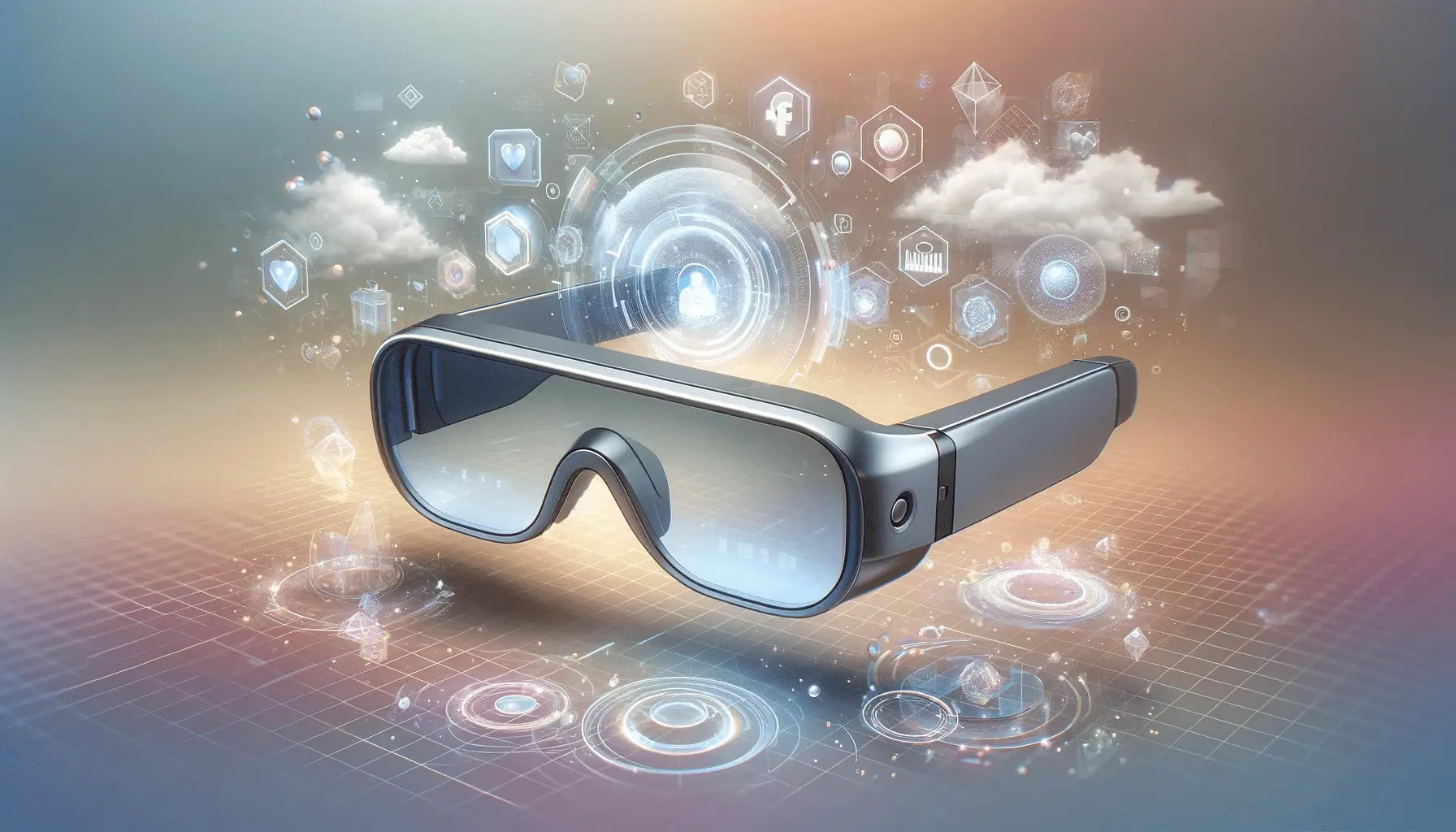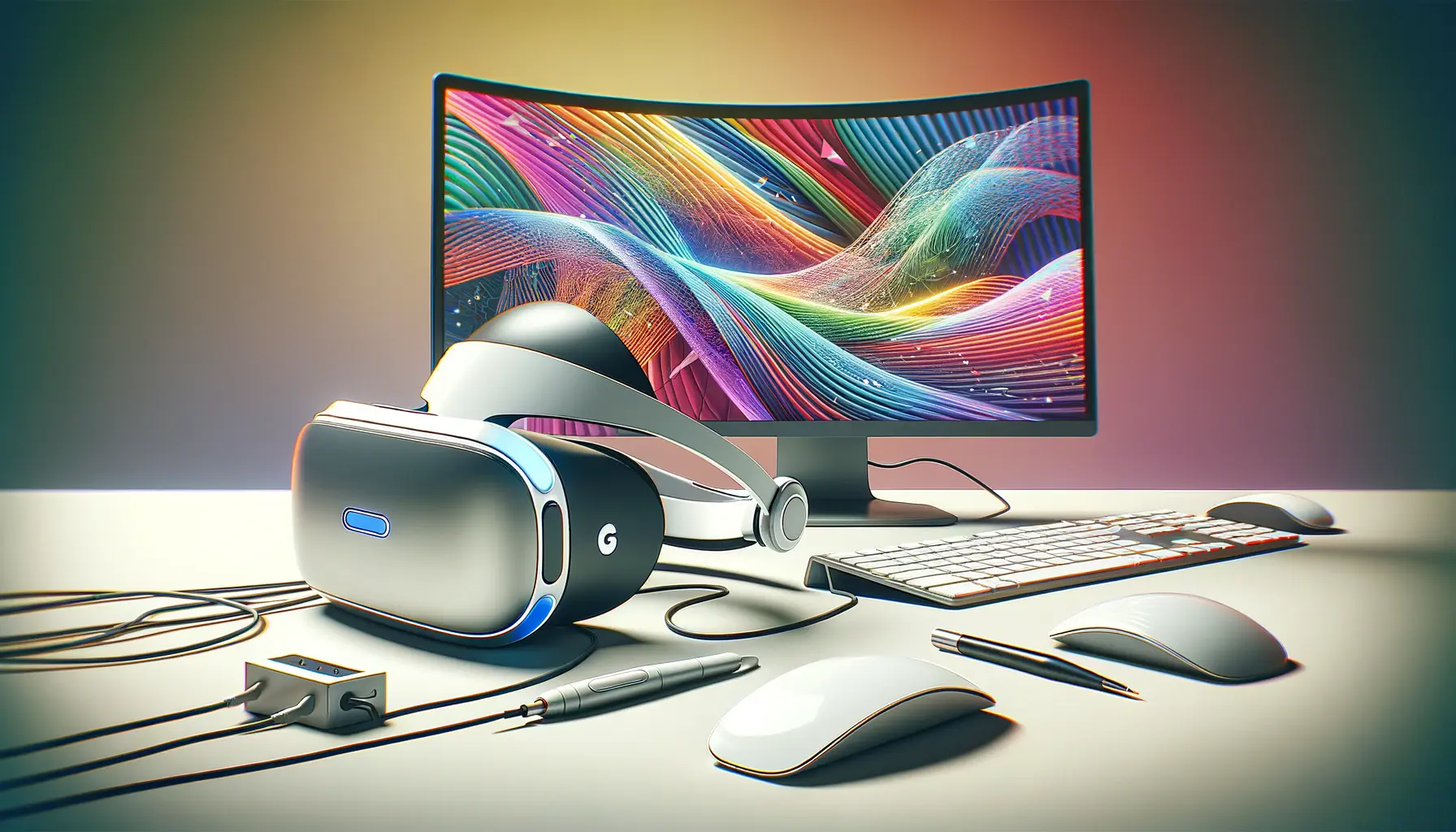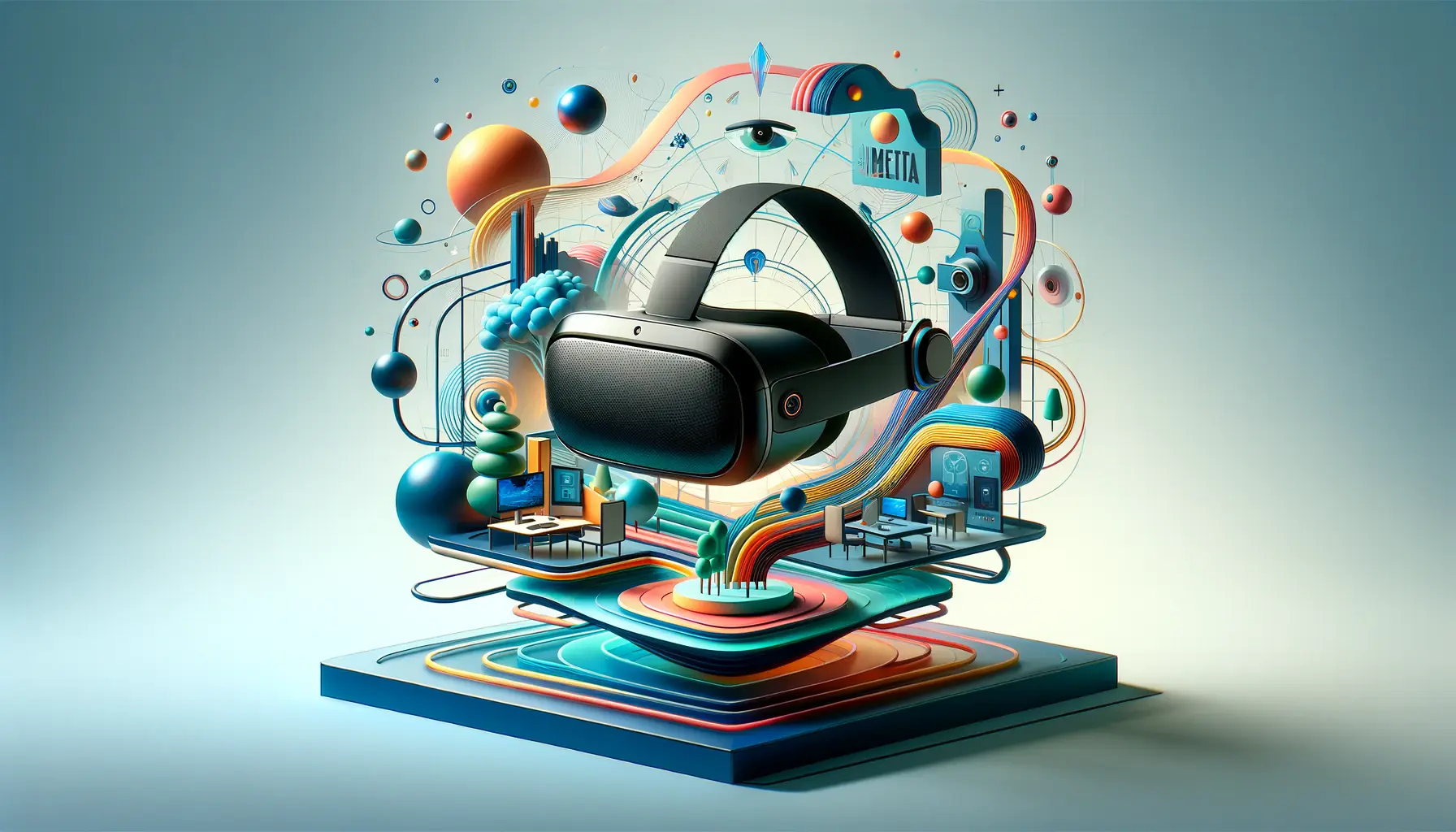The integration of augmented reality (AR) into content creation marks a transformative era in digital marketing and content strategy.
This innovative technology blurs the lines between the physical and digital worlds, offering immersive experiences that captivate audiences and elevate brand engagement.
As we delve into the realm of augmented reality, it’s essential to understand its impact on content marketing and how it reshapes the way we interact with digital content.
Augmented reality’s ability to overlay digital information onto the real world has opened new avenues for creativity and interaction.
This technology not only enhances user experience but also provides unique opportunities for brands to tell their stories in compelling ways.
By leveraging AR, content creators can create engaging, interactive experiences that drive deeper connections with their audience, making content not just seen but experienced.
- The Evolution of AR in Content Marketing
- Key Components of Effective AR Content
- Challenges in AR Content Creation and Solutions
- Augmented Reality Content Creation Tools
- Integrating AR Content into Marketing Strategies
- Measuring the Impact of AR in Content Marketing
- Future Trends in AR Content Creation
- Empowering Content Creation with Augmented Reality
- FAQs on Augmented Reality in Content Creation
The Evolution of AR in Content Marketing
The journey of augmented reality from a futuristic concept to a practical content marketing tool reflects its growing significance in the digital landscape.
Initially popularized by gaming and entertainment, AR has swiftly made its way into the marketing strategies of forward-thinking brands.
This transition underscores the technology’s versatility and its potential to revolutionize how we consume digital content.
Today, augmented reality in content marketing is not just about novelty; it’s about adding value to the user’s experience.
From virtual try-ons and interactive ads to AR-enhanced storytelling, the technology offers myriad ways to engage users.
It empowers brands to create memorable, immersive experiences that not only attract attention but also foster emotional connections with the audience.
Benefits of AR in Content Creation
Augmented reality brings a host of advantages to content creation, making it a powerful tool in a marketer’s arsenal.
One of the key benefits is enhanced engagement.
AR experiences are interactive and immersive, encouraging users to spend more time with the content.
This increased engagement leads to higher retention rates and, ultimately, a stronger brand connection.
Another significant advantage is the differentiation it offers.
In a crowded digital space, AR can help brands stand out by providing unique, innovative experiences that capture the audience’s imagination.
This not only helps in attracting new customers but also in retaining existing ones by offering them something beyond the ordinary.
AR in content creation is not just a trend; it’s a strategic tool that enhances engagement, offers differentiation, and creates memorable brand experiences.
Implementing AR in Content Strategies
Integrating augmented reality into content strategies requires thoughtful planning and execution.
The first step is to identify the goals you want to achieve with AR, whether it’s increasing brand awareness, enhancing user engagement, or driving sales.
Once the objectives are clear, the next step involves selecting the right AR platform and tools that align with your content strategy and audience needs.
Creating AR content also demands creativity and technical expertise.
It’s about crafting stories and experiences that resonate with your audience while leveraging the technology’s capabilities.
Brands must focus on designing interactive, user-friendly AR experiences that add value and enhance the overall content strategy.
By doing so, they can effectively harness the power of augmented reality to achieve their marketing objectives.
Key Components of Effective AR Content
Creating compelling augmented reality content involves more than just technical know-how; it requires a deep understanding of storytelling, user experience, and visual design.
To craft AR experiences that truly resonate with audiences, content creators must focus on several key components that form the backbone of effective AR content.
Interactive Storytelling
At the heart of any successful AR experience lies a captivating story.
Interactive storytelling in AR not only engages users but also immerses them in the narrative, making the experience memorable.
By weaving interactive elements into the storyline, creators can encourage users to actively participate in the narrative, deepening their connection with the content.
User-Centered Design
The design of AR experiences should always prioritize the user.
This means creating intuitive interfaces and interactions that are easy to navigate, even for those new to augmented reality.
A user-centered design approach ensures that AR content is accessible and enjoyable for a wide audience, thereby maximizing its impact.
Visual and Audio Elements
The use of high-quality visual and audio elements is crucial in AR content creation.
These components bring the virtual world to life, enhancing the realism of the experience.
From detailed 3D models to spatial audio effects, the right combination of visual and audio elements can significantly elevate the quality of AR content.
- 3D Models: Detailed and realistic 3D models are essential for creating immersive AR experiences. They should be optimized for performance to ensure smooth interactions.
- Audio Effects: Spatial audio adds depth to AR experiences, making them more engaging and realistic. Sound effects should be used strategically to complement the visual elements.
Optimization for Various Devices
AR content must be optimized for a range of devices, including smartphones, tablets, and AR glasses.
This ensures a seamless experience across different platforms, making the content accessible to a broader audience.
Optimization involves adjusting the resolution, file size, and performance settings to match the capabilities of each device.
Effective AR content creation hinges on interactive storytelling, user-centered design, high-quality visual and audio elements, and optimization for various devices.
Real-World Integration
One of the unique advantages of augmented reality is its ability to integrate digital content with the real world.
Effective AR experiences seamlessly blend virtual elements with the user’s physical environment, creating a cohesive and believable experience.
This integration requires careful planning and execution to ensure that digital content aligns perfectly with the real world.
- Identify the physical contexts in which users will interact with the AR content.
- Design virtual elements to complement and enhance the real-world environment.
- Use location-based data and markers to anchor digital content in the physical world accurately.
By focusing on these key components, content creators can develop AR experiences that not only captivate and engage users but also deliver meaningful value.
Whether it’s through interactive storytelling, immersive visuals, or seamless real-world integration, the goal is to create augmented reality content that enriches the user’s experience and strengthens their connection with the brand.
Challenges in AR Content Creation and Solutions
While augmented reality offers immense potential for engaging and innovative content, its creation comes with its own set of challenges.
Understanding these hurdles and identifying solutions is crucial for content creators aiming to leverage AR effectively.
Technical Complexity and Resource Requirements
One of the primary challenges in creating AR content is the technical complexity involved.
Developing immersive AR experiences requires a blend of skills in 3D modeling, animation, software development, and user interface design.
Additionally, the resources required for high-quality AR development, including advanced software and hardware, can be significant.
- Solution: Collaborate with AR development platforms that offer user-friendly tools and pre-built assets to simplify the creation process. Investing in training for your team to acquire AR-specific skills can also be beneficial.
Ensuring Cross-Platform Compatibility
Ensuring that AR content is compatible across different devices and operating systems can be challenging.
This is crucial for reaching a wider audience and providing a seamless user experience regardless of the device used.
- Solution: Utilize AR content creation tools that support cross-platform compatibility. Testing content across various devices and operating systems during the development phase can help identify and resolve compatibility issues early on.
User Engagement and Content Relevance
Maintaining user engagement and ensuring content relevance are ongoing challenges in AR content creation.
With the novelty of AR, there’s a risk of focusing too much on technology at the expense of content quality and relevance to the audience.
- Solution: Focus on storytelling and user experience when designing AR content. Regularly gather user feedback to understand their preferences and adjust content accordingly to maintain its relevance and engagement.
Innovative storytelling and immersive experiences should drive AR content creation, not just the technology itself.
Performance Optimization
AR content must be optimized to run smoothly on a wide range of devices, which can vary greatly in terms of processing power and graphics capabilities.
Poor performance can significantly detract from the user experience.
- Develop AR content with scalability in mind, allowing for adjustments based on the device’s capabilities.
- Use compression techniques and optimize 3D models to reduce file sizes without compromising quality.
By addressing these challenges with strategic solutions, content creators can enhance the effectiveness of their AR content.
Overcoming technical hurdles, ensuring compatibility, engaging users, and optimizing performance are key steps toward creating successful augmented reality experiences that captivate and inspire audiences.
Augmented Reality Content Creation Tools
The landscape of augmented reality content creation is supported by a variety of tools and platforms, each offering unique features and capabilities to assist creators in bringing their visions to life.
Selecting the right tools is crucial for the efficient development of high-quality AR experiences.
AR Development Platforms
AR development platforms provide a comprehensive suite of tools for creating and deploying augmented reality experiences.
These platforms often include features for 3D modeling, animation, coding, and testing, making them a one-stop solution for AR content creation.
- Unity: A leading game development platform that offers extensive support for AR development, including compatibility with ARKit and ARCore.
- Unreal Engine: Known for its high-fidelity graphics, Unreal Engine is another popular choice for creating immersive AR experiences.
ARKit and ARCore
ARKit (Apple) and ARCore (Google) are frameworks designed to simplify the development of augmented reality applications for iOS and Android devices, respectively.
They provide tools for motion tracking, environmental understanding, and light estimation, enabling the creation of dynamic and interactive AR experiences.
- Advantages: Easy integration with native mobile development environments, access to a wide range of device features, and support for creating customized AR experiences.
WebAR Development Tools
WebAR refers to augmented reality experiences that run directly in a web browser, eliminating the need for users to download a separate app.
WebAR development tools are designed to create AR content that is accessible via a URL, making it easily shareable and accessible.
- 8th Wall: A platform that enables the creation of interactive WebAR experiences compatible with all major smartphones, without the need for an app.
- A-Frame: An open-source web framework for building virtual and augmented reality experiences that work on standard web browsers.
Choosing the right AR content creation tool depends on the project’s specific needs, including the target platform, desired level of interactivity, and the technical capabilities of the development team.
Specialized AR Content Creation Software
Beyond general development platforms, specialized software focuses on specific aspects of AR content creation, such as 3D modeling, animation, or interactive design.
These tools can be used in conjunction with broader development environments to enhance the quality and functionality of AR experiences.
- Blender: An open-source 3D creation suite that supports the entire 3D pipeline, including modeling, rigging, animation, simulation, rendering, compositing, and motion tracking.
- Adobe Aero: Designed for designers and artists, Adobe Aero allows the creation of interactive AR experiences without coding, directly from a mobile device.
With the right set of tools, augmented reality content creators can push the boundaries of what’s possible, crafting experiences that are not only visually stunning but also deeply engaging and interactive.
The choice of tools plays a pivotal role in the development process, influencing the quality, accessibility, and impact of the final AR content.
Integrating AR Content into Marketing Strategies
Augmented reality content has the potential to transform marketing strategies by offering immersive experiences that engage customers in novel ways.
Integrating AR into your marketing efforts requires a strategic approach that aligns with your brand’s goals and audience’s preferences.
Enhancing Product Visualization
AR technology allows customers to visualize products in their own space or on themselves before making a purchase.
This not only enhances the shopping experience but also helps reduce the uncertainty associated with online shopping, leading to higher conversion rates and reduced return rates.
- Virtual try-ons for fashion and accessories.
- Furniture and home decor visualization in real environments.
Creating Interactive Advertising Campaigns
AR can transform traditional advertising into interactive experiences that capture the audience’s attention and leave a lasting impression.
By incorporating AR into advertising campaigns, brands can create engaging content that encourages users to interact with their products in meaningful ways.
- Interactive billboards and print ads that come to life when viewed through a smartphone.
- AR-enhanced social media filters that promote brand awareness and virality.
Leveraging AR for Storytelling
Storytelling is a powerful tool in marketing, and AR offers a unique medium to tell brand stories in an immersive and engaging manner.
Through AR, brands can create narrative experiences that allow customers to explore brand values, product origins, and more in a dynamic and interactive way.
- Brand heritage tours that showcase the history and values of a company.
- Product journey experiences that highlight the manufacturing process or source of materials.
AR in marketing is not just about showcasing products; it’s about creating experiences that engage, inform, and inspire customers, leading to deeper brand connections.
Incorporating AR into Events and Experiences
Events and experiences offer prime opportunities for integrating AR to enhance engagement and provide memorable moments.
Whether it’s a trade show, product launch, or in-store experience, AR can add an extra layer of interaction that enriches the event.
- AR scavenger hunts that encourage exploration and interaction at events.
- Virtual product demonstrations that allow attendees to explore features and benefits in an immersive way.
By thoughtfully integrating AR content into marketing strategies, brands can not only differentiate themselves in a crowded market but also build stronger relationships with their customers.
The key is to focus on creating value-added experiences that resonate with your audience and align with your brand’s messaging and objectives.
Measuring the Impact of AR in Content Marketing
To fully leverage augmented reality in content marketing, it’s crucial to measure its impact accurately.
This involves tracking specific metrics that can provide insights into how AR experiences influence user behavior, engagement, and ultimately, marketing outcomes.
Engagement Metrics
Engagement metrics are fundamental in assessing the effectiveness of AR content.
These metrics can include time spent interacting with AR experiences, the number of interactions per session, and the frequency of return engagements.
High engagement levels typically indicate that users find the AR content compelling and valuable.
- Time on experience: Measures the duration of user interaction with AR content.
- Interaction count: Tracks the number of times users interact with specific elements within the AR experience.
Conversion Metrics
Beyond engagement, it’s essential to understand how AR content contributes to conversion goals.
Conversion metrics can vary depending on the objectives, such as increased sales, sign-ups, or other desired actions.
Tracking these metrics helps quantify the direct impact of AR experiences on achieving business outcomes.
- Sales conversion rate: The percentage of users who make a purchase after interacting with AR content.
- Lead generation: The number of leads or sign-ups generated through AR-driven campaigns.
User Feedback and Satisfaction
User feedback is invaluable for gauging the qualitative impact of AR content.
Surveys, user reviews, and direct feedback can provide insights into user satisfaction, perceived value, and suggestions for improvement.
Positive feedback and high satisfaction levels are strong indicators of AR content’s success.
- Customer surveys: Collect user opinions and satisfaction ratings regarding their AR experience.
- Social media sentiment: Analyze comments and reactions on social media to gauge public perception of AR campaigns.
Effective measurement of AR’s impact involves a combination of quantitative metrics and qualitative feedback, providing a comprehensive view of its contribution to content marketing goals.
Technical Performance Metrics
Assessing the technical performance of AR experiences is crucial for ensuring optimal user experiences.
Metrics such as load times, error rates, and compatibility issues can affect user engagement and satisfaction.
Monitoring these metrics helps identify and rectify technical problems that could hinder the effectiveness of AR content.
- Load time: The time it takes for AR content to become fully interactive after initiation.
- Error rate: The frequency of errors encountered by users during their AR experience.
By systematically measuring the impact of augmented reality in content marketing, brands can make data-driven decisions to refine their AR strategies, enhance user experiences, and maximize the return on their AR investments.
This approach ensures that AR content not only captivates audiences but also contributes to achieving broader marketing and business objectives.
Future Trends in AR Content Creation
The landscape of augmented reality is evolving rapidly, with new trends emerging that promise to further revolutionize content creation and consumption.
Staying ahead of these trends is crucial for brands looking to leverage AR for engaging, innovative content marketing strategies.
Advancements in AR Technology
Technological advancements are set to enhance the capabilities and accessibility of AR, making it more immersive and realistic.
Developments in AR hardware, such as more sophisticated AR glasses and improved mobile device capabilities, will offer content creators new tools to craft even more compelling AR experiences.
- Increased realism through better graphics and interaction capabilities.
- Wider adoption of AR glasses, making AR content more accessible and integrated into daily life.
AR in E-commerce and Retail
AR is transforming e-commerce and retail by enabling virtual try-ons, 3D product previews, and interactive shopping experiences.
As consumers increasingly seek convenient and personalized shopping experiences, AR will become an essential component of online retail, offering customers new ways to explore and interact with products.
- Virtual fitting rooms for clothing and accessories.
- AR-enabled product customization features, allowing customers to visualize products in different colors, styles, or configurations.
Integration with Social Media Platforms
Social media platforms are increasingly incorporating AR features, offering brands new channels for engaging with audiences.
AR filters, games, and interactive ads on social media not only enhance user engagement but also provide unique opportunities for viral marketing campaigns.
- Branded AR filters and lenses for Instagram, Snapchat, and Facebook.
- Interactive AR games and challenges that encourage social sharing and participation.
The future of AR in content creation is about creating seamless, interactive experiences that blend the digital and physical worlds, enhancing the way we shop, learn, and connect with brands.
Personalization and Customization
AR technology will enable even greater levels of personalization and customization in content creation.
By leveraging user data and preferences, brands can create AR experiences tailored to individual users, enhancing relevance and engagement.
This trend towards personalization will redefine content marketing strategies, making them more targeted and effective.
- Personalized AR experiences based on user behavior and preferences.
- Customized AR content that adapts in real-time to user interactions and feedback.
As we look to the future, it’s clear that augmented reality will play a pivotal role in shaping content marketing strategies.
By embracing the latest trends and advancements in AR technology, brands can create captivating, immersive experiences that resonate with audiences and drive engagement.
The possibilities are endless, and the future of AR content creation is bright, offering new ways to connect with and inspire consumers.
Empowering Content Creation with Augmented Reality
The integration of augmented reality into content creation represents a significant shift in how brands engage with their audiences.
As we have explored, AR offers unparalleled opportunities for creating immersive, interactive experiences that captivate users and deepen their connection with content.
The evolution of AR technology, coupled with creative storytelling and strategic implementation, has the potential to transform content marketing strategies across industries.
Augmented Reality: A Catalyst for Engagement
Augmented reality in content creation is not just about leveraging new technology; it’s about reimagining the possibilities of digital interaction.
AR brings content to life, allowing users to experience products and narratives in a deeply personal and engaging way.
From virtual try-ons and interactive ads to immersive storytelling and personalized experiences, AR content is setting new standards for engagement, retention, and conversion.
Overcoming Challenges with Innovative Solutions
Despite its vast potential, creating effective AR content comes with its set of challenges, including technical complexity, cross-platform compatibility, and maintaining user engagement.
However, the continuous advancements in AR development tools and platforms are providing content creators with the resources needed to overcome these hurdles.
By focusing on user-centered design, leveraging high-quality visuals and audio, and optimizing for performance, brands can create AR experiences that are not only engaging but also accessible and enjoyable for a wide audience.
- Interactive storytelling as a means to captivate and engage users.
- User feedback and satisfaction as indicators of content success.
- Technical performance metrics to ensure seamless user experiences.
Looking Ahead: The Future of AR in Content Marketing
The future of augmented reality in content creation is bright, with emerging trends indicating even more immersive and personalized experiences.
As AR technology continues to evolve, we can expect to see its integration into various aspects of digital marketing, from e-commerce and retail to social media and beyond.
Personalization and customization will play a significant role, with AR enabling brands to create content that adapts to individual user preferences and behaviors.
- Technological advancements enhancing the realism and accessibility of AR.
- The growing importance of AR in e-commerce for product visualization.
- Social media platforms as key channels for AR content distribution.
In conclusion, augmented reality in content creation is reshaping the landscape of digital marketing, offering new ways for brands to engage, inform, and inspire their audiences.
By embracing AR, content creators can unlock the full potential of their marketing strategies, creating experiences that not only attract attention but also foster meaningful connections.
As we move forward, the integration of AR into content marketing will undoubtedly continue to grow, driven by its ability to bring unparalleled depth and interactivity to digital content.
Want your website to top Google search rankings? Leave the SEO to our professional agency!
FAQs on Augmented Reality in Content Creation
Explore common inquiries about integrating augmented reality into content creation, providing insights into its application, benefits, and strategies.
Augmented reality in content creation involves overlaying digital information onto the real world, enhancing user experiences with interactive and immersive elements.
Unlike virtual reality, which creates a fully immersive digital environment, AR enhances the real world by adding digital elements to it, allowing for interaction with both.
AR in marketing boosts engagement, enhances product visualization, offers unique interactive experiences, and can significantly improve conversion rates and customer satisfaction.
Yes, by enabling virtual try-ons and 3D product previews, AR content creation can drive sales by reducing purchase hesitation and enhancing the online shopping experience.
Tools like Unity, Unreal Engine, ARKit, and ARCore are commonly used for creating AR content, offering various features for developing immersive experiences.
Brands can integrate AR by enhancing product visualization, creating interactive ads, leveraging AR for storytelling, and incorporating it into events and experiences.
Challenges include technical complexity, ensuring cross-platform compatibility, maintaining user engagement, and optimizing content for various devices.
Future trends include advancements in AR technology, increased integration with e-commerce and retail, deeper social media platform integration, and personalized AR experiences.












